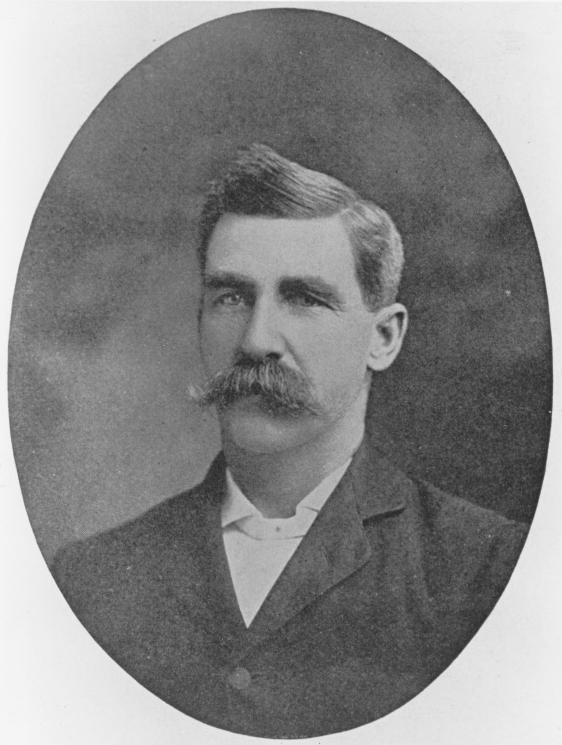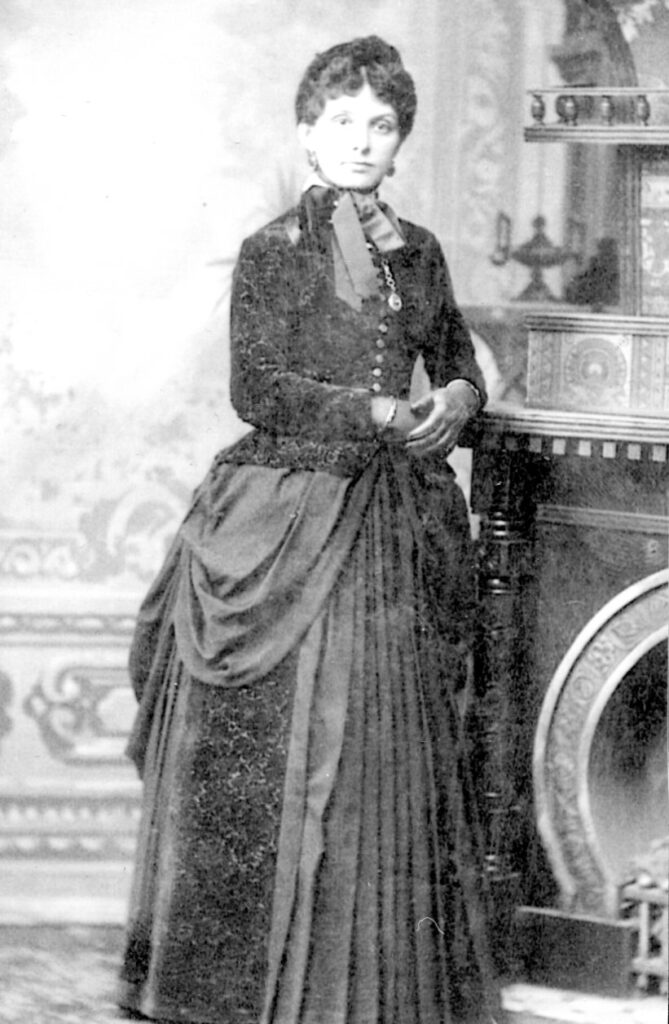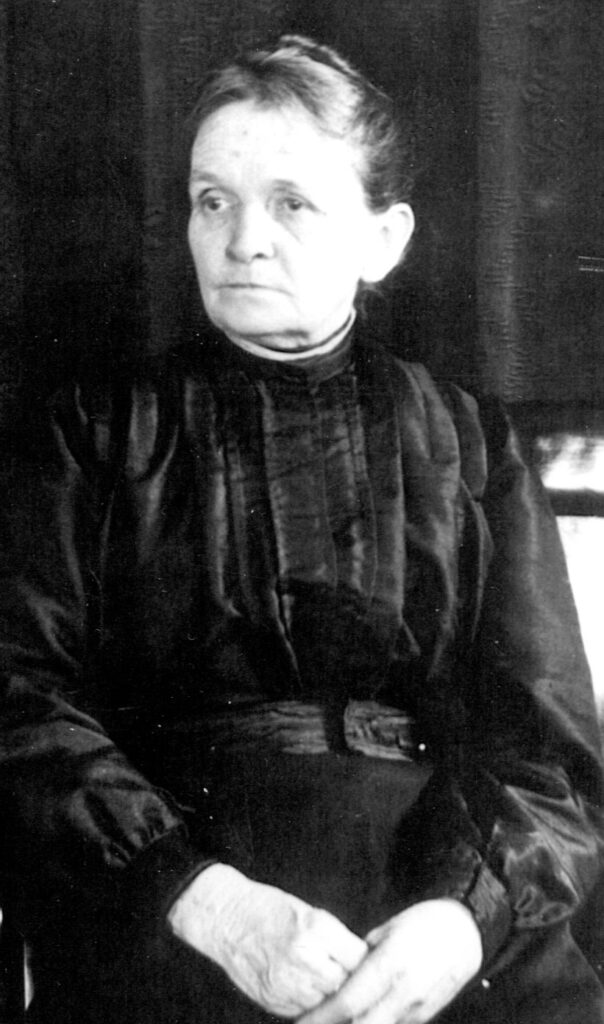
John E. Roberts was born February 10, 1852, near the Bay of Cardigan in Wales. At age 17, he came to the United States, stopping for a short time in Iowa, then moving on to make his home in Denver, Colorado. He helped build the Denver & Rio Grande narrow-gauge railroad in the Black Canyon near Gunnison, Colorado. Later, he worked on the Chicago, Burlington & Quincy Railroad when it was laying tracks to Denver. On June 3, 1885, he married Maggie B. Crampton in Denver, Colorado. To this union a son, William J. Roberts was born on June 20, 1886. Unfortunately, the young mother died just four months later, on October 23, 1886.

But unbeknown to John in this time of sorrow, brighter days were about to sweetly dawn. He writes later about the dawning of those brighter days in the April 23, 1914, issue of The Gospel Trumpet as follows:
“It was in 1888 … when dear old Brother D. S. Warner, Mother Smith, B. E. Warren, and two young sisters in the gospel work went out to Denver and the West to preach the everlasting gospel. I well remember yet that night, when Jesus washed my sins away and filled my soul with love and peace and joy. It was on Tuesday, the 14th of February, and while those dear saints were praying for me, I prayed just one short, earnest prayer, ‘Lord, give me the genuine; Lord, give me the genuine.’ I had digged deep and paid the price, and the genuine I got! I was at that time bedecked with gold and pearls and costly array, but later on I found that God had promised to ‘beautify the meek with salvation,’ and that no longer would I need the gold and pearls.
“Sometime later on, I had the privilege of meeting with the dear saints of God at camp meeting in Grand Junction, Michigan, where The Gospel Trumpet was then published; and there I found a people plainly dressed and filled with God, and walking in the narrow way. At the Trumpet office a little handful of brothers and sisters gave their time and talents in the publishing work and helped to scatter the gospel light among the sin-benighted souls in this and other lands. …”
On December 18, 1888, John was united in marriage to Eva C. Daughters in Denver, Colorado. To this union, a son, John E. Roberts, Jr. and two daughters, Amy and Ada Roberts were born. It is said that he delighted his family members by telling them stories of his youthful years in Wales where, as a boy growing up, he played among the ruins of Harlech Castle. He was the son of a Welsh minister.

John E. Roberts, Sr. served as a pastor of the Church of God (Evening Light Reformation) in Denver, Colorado, for 47 years. His daughter, Amy, also became a minister in the Church of God. John submitted articles and testimonies occasionally for The Gospel Trumpet and he also wrote a few songs. He wrote both words and music to Evening Light Songs #306, “Jesus Heals.” He was a firm believer in and strong advocate of divine healing. In the September 18, 1913, issue of The Gospel Trumpet we find an article written by him titled “Divine Healing Is Free.” Again, in the November 12, 1914, issue of The Gospel Trumpet we find another article by John E. Roberts on the subject of divine healing titled, “Is It the Will of the Lord?” In this article he says, “Twenty-six years’ experience of trusting the Lord for healing, during which time I and my family have been healed of many and of divers sicknesses and diseases, has proven to me that it is not only the Lord’s will to heal all who call on Him in faith, but that He is as full of compassion and pity for the sick and suffering today as He was when He healed the leper in Galilee (Mark 1:41).”
John E. Roberts wrote both words and music to “The Spirit and the Bride Say Come,” #149 in Echoes from Glory, 1893, and the lyrics to “The Great Battle for Truth,” #181 in the same songbook. John was also the author of the well-known and often reprinted poem, “Not Growing Old.”
“Not Growing Old”
“They say that I am growing old;
I’ve heard them tell it times untold,
In language plain and bold —
But I am NOT growing old.
“This frail old shell in which I dwell
Is growing old, I know full well —
But I am not the shell.
“What if my hair is turning grey?
Grey hairs are honorable, they say.
What if my eyesight’s growing dim?
I still can see to follow Him
Who sacrificed His life for me
Upon the cross of Calvary.
“What should I care if Time’s old plow
Has left its furrows on my brow?
Another house not made with hand,
Awaits me in the Glory Land.
“What though I falter in my walk?
What though my tongue refuse to talk?
I still can tread the narrow way,
I still can watch, and praise and pray.
“My hearing may not be as keen
As in the past it may have been,
Still, I can hear my Savior say,
In whispers soft, ‘This is the way.’
“The outward man, do what I can
To lengthen out this life’s short span,
Shall perish, and return to dust,
As everything in nature must.
“The inward man, the Scriptures say,
Is growing stronger every day.
Then how can I be growing old
When safe within my Savior’s fold?
“Ere long my soul shall fly away
And leave this tenement of clay;
This robe of flesh I’ll drop, and rise
To seize the ‘everlasting prize.’
I’ll meet you on the streets of gold,
And prove that I’m not growing old.”
From his residence at 3830 Stuart Street in Denver, Colorado,the soul of John E. Roberts, Sr. flew away on March 17, 1927. His body, aged 75 years, was laid to rest in Crown Hill Cemetery at Wheat Ridge, Colorado. Just seven months later, his wife, Eva, succeeded him in death on October 25, 1927, at the age of 74. Her body was laid to rest beside her husband.